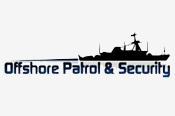Offshore Patrol & Security Conference 2011

24.03.2011

Offshore Patrol & Security 2011 Royal Navy Dockyard Portsmouth
Offshore Patrol & Security Conference 2011 at the Royal Navy Dockyard, Portsmouth UK, attracted an audience of over 50 coastguards and navies from around the world.
The Offshore Patrol & Security (OPS) event from 21st to 23rd March was hosted by The Development Network and chaired by Vice Admiral Sir Jeremy Blackham, former Royal Navy Deputy Chief of Staff.
The 25 speakers included Michael Tangora - US Coast Guard Deputy Assistant Commandant for Acquisition, Chris Trewlawny - Deputy Director of the IMO Maritime Safety Division and Dr Dave Sloggett from The Centre For Defence Studies.
International visitors and speakers at the Offshore Patrol & Security conference included Chile, Poland, Brazil, Finland, India, Netherlands, Iceland, Italy, Latvia, Norway, Spain, Australia, New Zealand, Germany, Canada, Croatia, Denmark, Sweden, Brunei, Ireland, Mexico, Pakistan, Oman, Russia, Goa, South Africa, Turkey and the United States.
The various navies and coastguards highlighted their future requirements and changing roles with an emphasis on anti-piracy. This generated a lot of interest amongst the 300 attendees. Most were high level decision makers in the Offshore Patrol Vessel sector. All operate RIBs and High Speed Craft in support of their ship operations. Fast response craft are being used for a range of new roles.
Until recently pirates tended to operate in small parties, riding in speedboats or skiffs, relatively close to the coastline. Various OPS conference speakers identified that as the ships have changed their routes away from the coast to avoid attack the pirates have also moved offshore and have increasingly come to rely on mother ships for support. Pirates currently hold literally hundreds of hostages and dozens of ships. They are now using pirated ships, with hostages still on board, as their mother ships to enter the offshore passage routes.
As millions of dollars are paid out in ransom money pirates are using this money to finance further attacks. An interesting question was, 'are the pirates using AIS (Automatic Identification System) to identify and target vessels?' There was no definitive answer but as a precaution many ships now turn off their AIS unless under threat. AIS will become another standard electronics systems on patrol and boarding RIBs.
The high risk sea area off of Somalia covers over one million miles of ocean. Chris Trewlawny, of the IMO Maritime Safety Division, graphically demonstrated that this sea area is approximately 15 times the size of the UK. A very tough task when around 500 boats a week are passing through these waters and 1% are being attacked.
Although patrol vessels are used all over the world to cover large areas of water it is the ship’s boats that are usually launched to board a suspect craft. Typical illegal cargoes include narcotics, arms and people. The smugglers operate from all sizes of vessels while the boarding teams and commandos that are the naval forces usually travel in Rigid Inflatable Boats (RIBs) and helicopters. The conference discussed whether the modern High Speed Craft, used in an interceptor role, may be launched from a ship instead of a helicopter. The interesting comparison was that the running costs of a helicopter are 10 times higher per hour than the latest lightweight, high speed interceptors.
More boats will be needed but the equipment carried by RIBs and High Speed Craft is going to have to change. Boat builders wanting to enter this sector will need to offer ballistic protection and sophisticated surveillance electronics. Exhibitors at the OPS conference included multiple day and night camera systems with laser imaging that is designed for use on fast, open boats that are often exposed to the elements and high levels of vibration. Small, tough cameras can be carried by personnel when they leave the boat. These cameras can be linked to improve situational awareness during board and search tasks. Camera images then need to be fed to recording systems to provide evidence in court or for de-briefing.
Overall the OPS conference made it clear that the role of the 'ship's boat' is changing. RIBs and High Speed Craft will need to become faster, multi-role craft with the same navigation, communication and information systems that are found on the ship’s bridge. To keep the oceans safe professional boat coxswains and crews will need to develop specialist skills to operate fast response craft effectively in this changing environment.
The Shock Mitigation Directory is pleased to be a media partner and supporter of this event that includes an exhibition of maritime solutions.
For more information see Offshore Patrol & Security
All images are copyright RIB & HSC 2024 unless otherwise stated.
This does not exclude the owner's assertion of copyright over the material.
05.04.2024
Hydro Motion - H2 from NL to England in 2024
The TU Delft Hydro Motion Team wants to cross to…
05.01.2024
The Challenges of Unpredictable Marine Energy
From military to superyacht, it is clear there is an urgent…
Speed@Seawork 2024
Dates:
10th June 2024
Location:
Cowes, Isle Of Wight,
Foiling and Flying RIBs
Foiling powerboat designed to meet military needs - fast, stable, silent, fuel-saving. Collaboration by SEAir Foiling Systems and Sillinger RIBs.…













